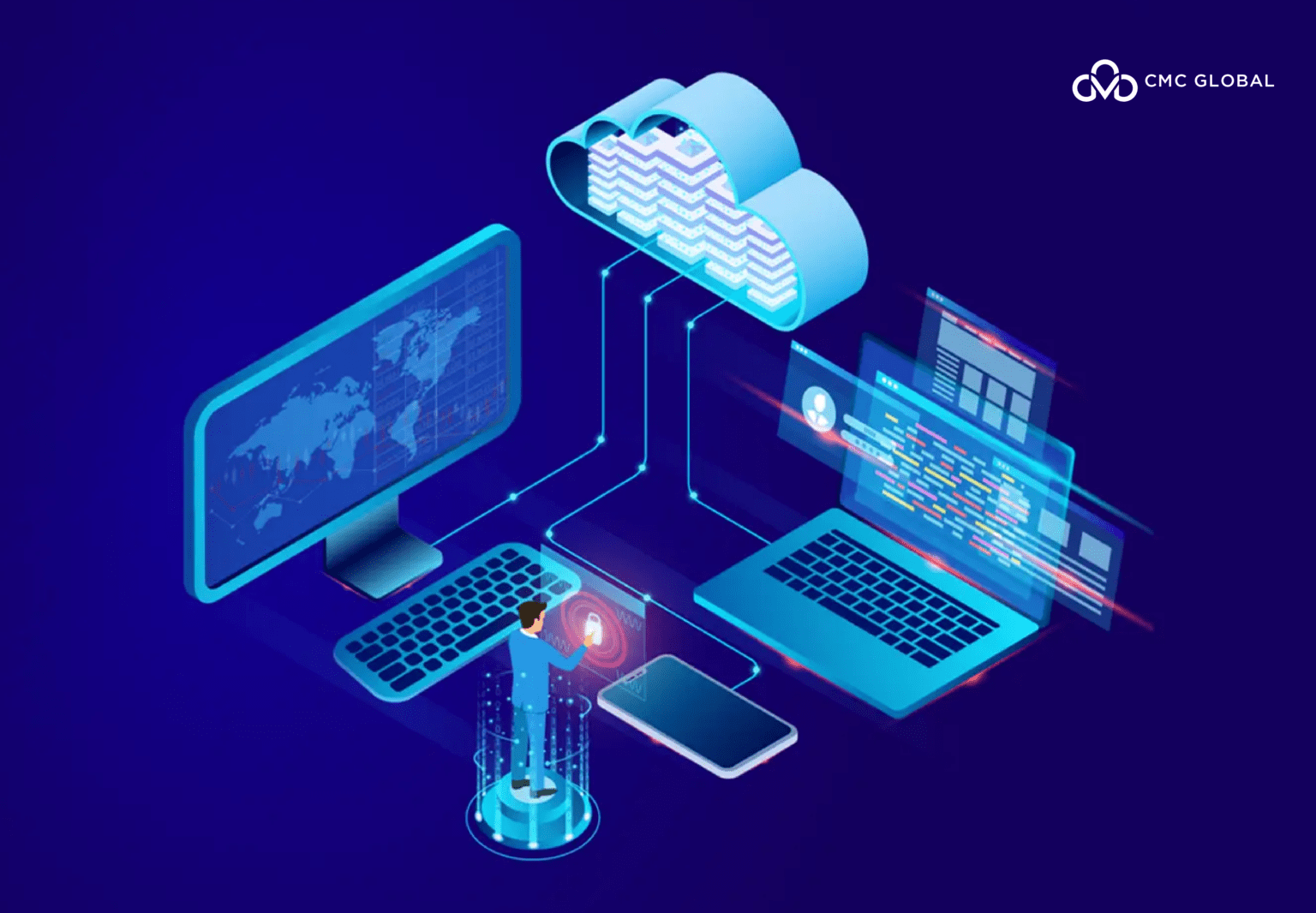Understanding the newest breakthroughs in artificial intelligence (AI) might be challenging. Still, if you’re interested in studying the fundamentals, many AI innovations can be boiled down to two concepts: machine learning and deep learning.
There are several examples of machine learning and deep learning. It’s what allows self-driving vehicles to become a reality, how Netflix decides which program you’ll want to watch next, and how Facebook identifies whose face is in a photo.
Machine learning and deep learning might appear to be synonymous buzzwords, but they are not. So, what precisely are these two ideas that dominate AI discussions, and how do they differ? Continue reading to find out.
What Is Artificial Intelligence?
Artificial intelligence (AI) is a branch of science concerned with teaching robots to think and act like humans.
This may appear straightforward, yet no modern machine can equal the complexity of human intellect. Computers excel at applying rules and carrying out tasks, yet what is a very simple ‘activity’ for a person may be enormously complicated for a computer.
Carrying a tray of drinks through a packed bar and bringing them to the proper client, for example, is something waiters perform on a daily basis. Still, it is a sophisticated decision-making exercise based on a huge amount of data being transferred between neurons in the human brain.
Computers aren’t quite there yet, but machine learning and deep learning are steps in the right direction: evaluating massive amounts of data and making decisions/predictions based on it with as little human interaction as possible.
What Is Machine Learning?
Machine Learning is a subset of AI that focuses on a specific goal: teaching computers to execute tasks without explicit programming. In most situations, computers are fed structured data and ‘learn’ to grow better at analyzing and acting on that data over time.
Consider “structured data” to be data inputs that may be placed in columns and rows. In Excel, you might make a category column named ‘food’ with row items like ‘fruit’ or ‘meat.’ This type of ‘structured’ data is extremely simple for computers to deal with, and the benefits are evident (it’s no surprise that one of the most significant data programming languages is called SQL – Structured Query Language.
A computer, once designed, can accept fresh data endlessly, sorting and acting on it without the need for additional human interaction. Even if you cease categorizing your data, the computer may eventually recognize that ‘fruit’ is a sort of food. This ‘self-reliance’ is so crucial to machine learning that it divides the discipline into subcategories dependent on how much continuing human assistance is required.
How Does Machine Learning Work?
An on-demand music streaming service is an example of a machine learning system. Machine learning algorithms correlate the listener’s choices with other listeners who have similar musical likes in order for the service to decide which new songs or artists to propose to a listener. This method, which is sometimes referred to as AI, is employed in a wide range of applications that provide automatic suggestions.
Machine learning entails a great deal of hard arithmetic and code that, in the end, provides the same mechanical purpose as a flashlight, automobile, or computer screen. When something is said to be capable of “machine learning,” we imply that it can execute a function with the data provided to it and improves over time. It’s like when you had a flashlight that switched on anytime you said, “It’s dark,” and it recognized various words involving the word “dark.”
Machine learning powers a wide range of automated jobs in a variety of businesses, from data security organizations hunting out malware to finance specialists looking for indications for profitable trades. The AI algorithms are built to continually learn in order to replicate a virtual personal assistant, which they accomplish quite successfully.
When we talk about deep learning and deep neural networks, the way machines can learn new techniques becomes really intriguing (and thrilling).
What Is Deep Learning?
Machine learning is the ability of computers to do tasks without being explicitly programmed… but computers continue to think and act like machines. Their capacity to accomplish some difficult tasks, such as extracting data from an image or video, falls well short of what humans are capable of.
Deep learning models, which have been particularly designed after the human brain, provide an exceptionally complex approach to machine learning and are poised to solve these difficulties. Deep neural networks are complex, multi-layered structures that allow data to be transmitted between nodes (like neurons) in highly linked ways. The data, as a result, undergoes a non-linear transformation that becomes progressively abstract.
While it requires massive amounts of data to ‘feed and create’ such a system, it may start producing results almost immediately, and there is minimal need for human interaction once the programs are in place.
How Does Deep Learning Work?
A deep learning model is intended to examine data indefinitely using a logical framework similar to how a human would form conclusions. Deep learning applications employ a layered structure of algorithms known as an artificial neural network to perform this analysis. An artificial neural network’s architecture is inspired by the organic network of neurons in the human brain, resulting in a learning system that is significantly more powerful than traditional machine learning models.
It’s difficult to ensure that a deep learning model doesn’t draw wrong conclusions—as with other types of AI, it takes a lot of training to get the learning processes right. However, when it works as planned, effective deep learning is typically seen as a scientific miracle by many.
Google’s AlphaGo is a well-known example of deep learning. Google developed a computer program using its own neural network to teach itself to play the abstract board game Go, which is noted for demanding strong intelligence and intuition. AlphaGo’s deep learning model learned to play at a level never seen previously in AI by playing against professional Go players. It did it without being directed when to make a specific move.
When AlphaGo defeated many world-renowned “masters” of the game, it created quite a stir—not only could a computer comprehend the sophisticated strategies and abstract parts of the game, but it was also becoming one of the best players. It was a war between human intellect and artificial intelligence, and the latter won.
Another example is an image recognition program that can recognize a type of flower or a species of bird based on a photo. A deep neural network powers the image classification. Deep learning is also used to guide voice recognition and translation, as well as to power self-driving automobiles.
Machine Learning Vs. Deep Learning: 5 Key Differences
While there are many differences between machine learning and deep learning, these are five of the most important:
Human Intervention
Machine learning requires more on-going human intervention to get accurate results. Deep learning is more sophisticated to set up but requires much less human intervention thereafter.
Hardware
Machine learning algorithms are often less complicated than deep learning algorithms and may be executed on standard computers, but deep learning systems require significantly more powerful hardware and resources. Graphics processing units (GPU) are handy because of their high bandwidth memory and ability to disguise memory transfer latency (delays) owing to thread parallelism (the ability to have many operations run efficiently at the same time.)
Time
Machine learning systems can be put up and run fast, but their power may be restricted. Deep learning systems require more effort to set up but may produce results instantly.
Approach
Machine learning often necessitates organized data and uses classic techniques such as linear regression. Deep learning uses neural networks and is designed to handle vast amounts of unstructured data.
Applications
Machine learning is already being used in places like your email inbox, bank, and doctor’s office. Deep learning technology allows increasingly complicated and autonomous algorithms, such as self-driving automobiles or surgical robots.
What Are Some Applications of Machine Learning?
Every day, we witness the results of machine learning algorithms. It’s difficult to identify a location where learning doesn’t have an influence in our contemporary era of conventional and widespread learning machines. Among the industries are:
- Data Analytics: The availability of cloud platforms and massive data collections has created an ideal environment in which self-directed machines, learning from this treasure trove of data, can provide predictive insights and analytics to behavioral analytics in almost any industry that generates quantifiable information.
- Customer Service: Over the last decade, companies such as Amazon and Microsoft have been developing their R&D on smart chatbots that can learn based on user interactions and, using terabytes of data, answer user inquiries meaningfully and with the delicate touch of expert customer service.
- Finance and Banking: Algorithms that draw on huge amounts of client data can play a variety of functions in the banking industry. Machine learning has revolutionized internet banking, from customer service to fraud detection and investing insights.
- Manufacturing: Machine learning algorithms have made significant breakthroughs in fields such as IoT manufacturing and “Industry 4.0.” This includes learning algorithms that may assist equipment and supply chain managers with insights into system operations, maintenance, and optimization.
What Are Some Applications of Deep Learning?
Deep learning will have a significant impact on many of the same areas of influence that learning does while also increasing their capacity to do optimum tasks in more dynamic settings. Deep learning also enables engineers to create learning machines in areas that were previously considered science fiction.
Some of the more practical applications of deep learning algorithms include:
- Self-Driving Cars: Several automakers are competing to create the first commercially viable self-driving automobile. Deep learning enables these automobiles by developing self-learning vehicles that can learn from both driving simulations and real-world driving scenarios.
- Advanced Video Game AI: For a long time, massive single-player and multiplayer games have featured AI “bots” that could compete against human players with varied degrees of success. Deep learning and reinforcement learning (dubbed “deep reinforcement learning”) is being used by AI researchers and game creators not just to construct self-teaching gaming agents but also to extend AI research.
- Biometrics: Given a predictable piece of technology that can read bodily features and establish their uniqueness and validity, biometrics is an extremely safe and dependable type of user authentication. Access control algorithms that employ deep learning can leverage more complicated biometric markers (facial recognition, iris recognition, etc.) as forms of identification.
- Healthcare: Some aspects of machine learning have already been implemented in the healthcare industry to assist with areas such as customer service, payment processing, and analytics. However, with deep learning, healthcare has increasingly begun to use technology to assist with things like an early cancer diagnosis, genome sequencing, and preventative treatment.




